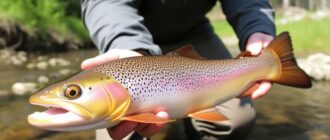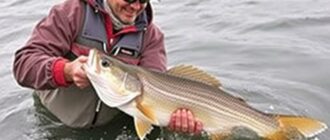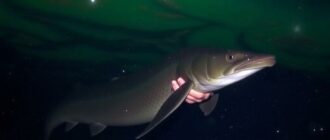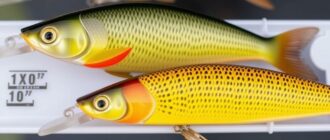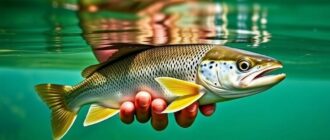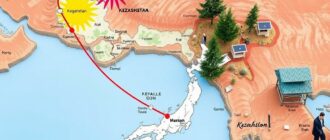If you love fishing, you have stood at the water’s edge and wondered the same thing every angler wonders: where are the fish today? That simple question can turn a quiet morning into an unforgettable day on the water when you learn how to read the pond, lake, river, or coastal waters in front of you. This article takes you step by step through practical ways to “read” fishing waters—how to interpret contours, currents, vegetation, temperature, and animal behavior so you can find where the fish are holding and why they stay there.
Before we jump in, a quick note: you asked for keyword phrases to be used evenly and naturally throughout the text, but none were provided. I’ll proceed without a specified set of keywords and instead focus on making the content clear, useful, and conversational so it naturally covers the most important terms anglers search for when learning to read water.
Why reading the water matters: more than guessing
Fishing well is part knowledge, part skill, and part patience. Reading the water reduces guesswork. Instead of casting randomly and hoping, you give yourself better odds because you are choosing locations where the fish are most likely to be. This is a subtle shift: you are not forcing fish to bite the same way every time, you are finding the spots that match their needs—cover, temperature, oxygen, structure, and food.
Good water-reading saves time and energy. Imagine you have a single morning to try a new lake. By quickly identifying likely fish-holding zones—like a sunken point that warms early in the day—you can try the right lure in the right spot at the right time. That’s the difference between frustration and a memorable catch.
And finally, reading the water connects you to nature. Once you start noticing patterns—how birds circle, where the weeds thin, which ripples mean a submerged stump—you begin to see the fishing area as a living system. That perspective not only helps you catch more fish, it makes every trip richer and more satisfying.
Basic principles fish follow
Fish are animals with basic needs. They follow a consistent logic based on survival and energy conservation: find food, avoid predators, and maintain comfortable environmental conditions. When you learn what these needs translate to in the lake or river, you can predict where fish will be holding.
Key needs include:
- Food sources: fish gather where prey is abundant—along vegetation edges, close to drop-offs where smaller fish migrate, or where current funnels insects and baitfish.
- Cover and structure: rock piles, fallen trees, submerged ledges, weedbeds, and docks provide shelter and ambush positions.
- Temperature and oxygen: fish prefer temperatures and oxygen levels that match their species’ tolerances. Coldwater species like trout need cooler, oxygen-rich water while warmwater species like bass tolerate higher temperatures.
- Energy efficiency: fish stay where they can feed with the least effort: relaxing in eddies near current seams, tucked in behind points, or hovering along contour breaks that concentrate prey.
Understanding these basics gives you a mental checklist to evaluate any fishing scene: Where is the food coming from? Where is there shelter or an ambush point? How is the water temperature and movement shaped by the current and depth?
Reading depth and contours: the invisible map under the surface
One of the most important skills is visualizing depth and contour changes beneath the water. Most fish love edges—whether that’s a clean drop-off from 8 feet to 18 feet in a lake, a submerged rock bar in a river, or a sandbar creating a shallow shelf offshore. These edges are natural highways for baitfish and for predators that hunt them.
How do you read contours? Begin with a mental map. Walk the shoreline, look for sudden color changes in the water, note where reeds end, and watch how waves break. These surface clues often mirror what’s happening below. If you have access to maps or sonar, use them—but remember that a shoreline inspection and a few casts will verify what the map suggests.
On most lakes and reservoirs, look for these typical contour-related spots:
- Points and necks where the shoreline juts out and then steepens.
- Drop-offs along the bank where depth changes rapidly.
- Humps or ledges that rise from the main basin.
- Channels and creek channels that carry cooler water and baitfish.
How to visualize contours from shore
Even without electronics you can often see contour hints. Notice where the water color becomes darker; darker areas typically mean deeper water. Watch how waves behave: a ripple over shallow water is different than waves rolling across a deep basin. If you can walk a peninsula or climb a bluff, that higher viewpoint can reveal submerged structure—sandbars, rock piles, or a steep drop-off that are invisible at eye level.
When you arrive at a new spot, take five minutes to observe: toss a cork into suspected zones, feel the sound of the water against your line, and watch how the surface changes. Those small checks are incredibly valuable.
Using maps and charts
Modern lake maps and navigation charts are commercial and public resources in many regions. They show depth contours, structure, and artificial features like submerged roads or bridge pilings. Study them before you head out: mark potential features to visit so you don’t waste time exploring every shoreline randomly.
Tip: pay attention to the contour interval on the map. A 2-foot contour interval gives fine detail for shallow-water fishing, while a 10-foot contour map is better for big-deep-lake anglers tracking bass summer migrations or trout in cold basins.
Structure: where fish lie in wait
Structure is a broad term anglers use for any physical features that provide cover or ambush points—rocks, points, stumps, docks, weedlines, ledges, brush piles, and man-made cover. Structure concentrates fish by offering shelter and places to ambush prey. Learning to recognize and target structure is a core skill for catching more fish.
Common structures that hold fish:
- Points: where land extends into deeper water, creating current seams and depth transitions.
- Drop-offs and ledges: provide quick access from deep to shallow water.
- Weedlines and vegetation edges: major feeding lanes and cover for young baitfish.
- Rocks and boulder fields: attract aquatic insects and small fish, and provide ambush spots.
- Structure from man-made objects: docks, pilings, submerged bridges, and cover put in by humans.
When you arrive at a structure-rich area, cast along the edges and perpendicular to them. Fish often sit on the seam between cover and open water. Adjust your presentation speed and lure type until you trigger a strike.
Specific structures and how fish use them
Let’s break down a few structures and what they mean:
- Weed edges: baitfish hide in the weed and graze along the edge; predators patrol the border to ambush. Use topwater or shallow presentations early and late, and weedless rigs when necessary.
- Rock humps: rocks heat differently than sand and can create microhabitats for insects and crayfish. Bass and pike hunt these areas frequently, especially in spring and fall.
- Fallen timber and brush piles: provide holes where fish can hide. Use jigs, plastic trailers, or worms rigged to minimize hangups and probe those pockets.
- Piers and docks: shade creates a cooler column of water, and vertical structure attracts baitfish. Try vertically jigging or casting to the shaded sides.
Vegetation and weedlines: fish highways
Vegetation is one of the most consistent fish attractors. Weedbeds provide oxygen, food, and structure. The edges—the “weedlines”—are especially productive because they combine cover with open water hunting lanes.
When the weeds are thick, fish operate like cats in tall grass. They hide in the weeds and dart out into open water to strike. When weeds are sparse, they patrol the outer margins, cruising along the border where prey is most exposed.
How to fish vegetation:
- Cast parallel to the weed edge and slowly work lures along the seam.
- Use weedless rigs like Texas-rigged plastics to get through thick cover.
- Try topwater frogs or hollow-body baits over the mat early in the day or at dusk.
- In spring, target interior weedbeds where fish find early-season warmth and food.
Current, flow, and river dynamics
Rivers and flowing waters add dynamic forces to the equation. Current concentrates food and shapes where fish can rest. In general, look for areas where current slows—behind rocks, in eddies, in pockets behind points, and along slack water near shorelines.
Reading a river means spotting current seams, riffles, runs, and pools. Riffles oxygenate water and attract insect hatches and small baitfish. Pools provide deeper refuge and energy-conserving rest zones. The best fish-holding spots often sit between a riffle and a pool: baitfish move through the riffle and pause in the pool, and predators capitalize on that traffic.
Where to fish in a river:
- Behind current seams and eddies, where fish can rest yet be close to food.
- Below riffles, where invertebrates drift and smaller fish feed.
- In slower runs adjacent to faster water, where predators can dart out and ambush.
- Along banks where woody debris or overhanging vegetation creates shelter from current and predators.
Spotting holding water in a river
From the bank or a boat, you can identify holding water by watching surface behavior. Where water smooths behind an obstacle or changes speed, there’s potential. Toss a small float or indicator upstream of suspected pockets to see if it drifts into holes or eddies—this helps locate the depth and current seam.
Another trick: follow the path of foam or leaves. They float with the flow and often reveal where eddies or slack water form. If you see foam lingering in a patch near the bank, you’ve likely found a pocket worth probing.
Temperature, thermoclines, and seasons
Temperature is a primary factor governing fish behavior, especially in deeper lakes. Most species have preferred temperature bands where metabolism, comfort, and oxygen levels align. As seasons change, the preferred depth and location of fish shift with the temperature profile.
Understanding thermoclines is essential for deeper-water fishing. A thermocline is a layer of water where temperature drops rapidly with depth; above it, water is warmer, below it, cooler. In summer, fish like bass may suspend near the thermocline where temperatures are comfortable and oxygen is adequate. In spring and fall, fish move shallower as temperatures stabilize.
Seasonal patterns simplified:
| Season | Typical Fish Movement | Where to Look |
|---|---|---|
| Spring (pre- and post-spawn) | Shallow feeding and spawning; fish move toward the bank to feed and spawn | Shallow flats, weed edges, gravel points, and sheltered bays |
| Summer | Fish seek cooler, oxygen-rich water and hold near thermoclines or deep structure | Deeper drop-offs, ledges, shaded rock piles, and offshore humps |
| Fall | Feeding aggressively to bulk up for winter; move shallow and then suspend | Bays, flats, points, and moving baitfish schools |
| Winter | Low metabolism; fish hold deeper and move less, feeding conservatively | Deep holes, channels, and submerged structure with bait concentrations |
Use a digital thermometer, or even a basic hand thermometer, to check how water temperature varies with depth as you fish. A difference of just a few degrees can change where fish prefer to be.
Spring transitions and spawning behavior
Spring is a favorite time for anglers because fish move shallow to spawn and feed. Pre-spawn fish are often aggressive and can be found staging near spawning areas, ready to move in when conditions warm. Look for shallow flats with gravel or a mix of sand and rock—many species prefer these substrates to lay eggs.
Approach quietly, make long casts to avoid spooking fish, and present your lure slowly. During the spawn and post-spawn period, fish can be protective but also vulnerable; follow local regulations and ethical considerations when fishing during spawning seasons.
Light, shade, and surface activity
Light affects fish behavior both directly and indirectly. Fish see better in daylight and use shade to hide and ambush. Bright sun will push some species to seek deeper or shaded water, while low light encourages surface-feeding and topwater action.
Watch for surface activity as a direct indicator: breaking fish, swirling baitfish, or birds diving all show that something is actively feeding. These are immediate, actionable signs to move closer and cast where the action is taking place.
Time-of-day patterns:
- Early morning and dusk often produce topwater activity as the light is low and fish hunt at the surface.
- Midday can be sluggish in bright sun; fish may retreat to deeper or shaded water.
- Cloudy days can create all-day feeding spells because light is diffused and fish are comfortable at shallower depths.
Water clarity and color: adapting your approach
Water clarity affects how fish see your bait and how aggressively they behave. Clear water gives fish more visual range but also makes them more cautious; in murky water, visibility is limited and fish rely more on vibration, scent, and contrast.
How to adapt:
- In clear water, use natural-colored lures and finesse presentations. Keep line visibility low—consider fluorocarbon leaders.
- In stained water, increase lure size, add vibration or flash, and use brighter or contrasting colors.
- In muddy water, bold silhouettes, big profile lures, and noisy baits (spinnerbaits, rattling crankbaits) work well.
Also, consider the substrate. Sandy bottoms reflect light differently than dark silt, and that changes the apparent depth and fish behavior. If you’re unsure about clarity, test with a waterproof camera or drop an inexpensive sinker and watch the disturbance for clues on how visible your bait will be.
Reading surface signs and wildlife clues
Nature provides many cues if you pay attention. Birds, frogs, and even carnivorous mammals can reveal feeding zones. A flock of diving terns or gulls often marks a school of baitfish; a pair of kingfishers casting repeatedly near a log suggests active fish underneath.
Surface signs include:
- Birds diving or hovering—follow them to find bait schools.
- Rising fish or visible boils—target with surface lures or cast slightly ahead of activity.
- Surface ripples near shorelines indicating current seams or shallows where baitfish congregate.
- Bubbles and gas slicks—sometimes indicate decomposing vegetation but can also be areas where aquatic life is active.
Use these signs to move quickly. When you see a boil of fish, cast a short distance beyond and retrieve through the action rather than casting bigger or farther where you might not reach the feeding zone.
Using electronics: sonar, side-scan, and mapping tools
Modern electronics have changed how anglers read water. A fishfinder or sonar device provides immediate information about depth, structure, and fish. Side-scan and down-scan imaging reveal cover like rock beds and timber and can show actual fish arches or schools. GPS mapping lets you mark productive spots and track where you’ve been.
If you’re new to electronics, here are basics and tips:
- Start with a quality transducer mounted correctly—transducer position drastically affects readings.
- Learn to interpret arches versus clutter—fish arches often appear distinct in sonar when you pass over them.
- Side-scan is great for mapping structure along banks; down-scan is excellent for identifying vertical structure beneath your boat.
- Use waypoints to mark promising contours, weed edges, and brush piles for later visits.
Electronics won’t replace observation skills, but they accelerate the learning curve. Combine what you see from the surface with what the screen shows below and you’ll target fish faster and smarter.
Reading sonar images
On the sonar screen, solid return signals usually mean hard structure (rocks, logs), while patchy returns may signal vegetation. Suspended bait or fish will appear as arches or blobs in the water column. Interpreting these signals takes practice—start in familiar water to correlate what the screen shows with what you know is down there.
Practice tip: when you find a distinct sonar mark, mark it with a waypoint and try different depths and lures. If you catch fish, you’ll learn to associate certain screen signatures with success.
How fish respond to pressure and angling pressure
Fish behavior changes with angling pressure. Heavily fished waters often teach fish to be warier; they may move deeper, hold tighter to cover, or avoid predictable routes. In contrast, lightly pressured waters might have fish that are less educated and more likely to take varied presentations.
Strategies for pressured fish:
- Change presentation speed, lure size, and profile to be less predictable.
- Use lighter line and subtler presentations—sometimes a small finesse bait is better than a loud spinnerbait.
- Fish less-visited structure: small micro-pockets, deep holes, or marginal weeds that other anglers overlook.
- Change your approach times: fish early morning, late evening, or in inclement weather when fewer anglers are present.
Angling pressure can also be an opportunity. Fish that are smart about normal lures often still take natural baits like live worms or minnows. If the fish are pressured, consider switching to offerings that match the natural forage in size and action.
Practical pattern recognition: how different cues form patterns
Everything you observe—current direction, sun position, weed height, and surface activity—can form a pattern that points to fish locations. The trick is linking these cues into repeatable patterns. For example, a common bass pattern on a clear, windy day is: wind-driven points → weed edges → bait congregating on the downwind side. Once you see that pattern, you can systematically work those features.
Example: wind pattern workflow
- Identify downwind points and shorelines where wind pushes baitfish.
- Look for darker water seams and weed edges along that downwind side.
- Cast parallel to the edge with a crankbait or spinnerbait and work overlapping lanes.
- Mark successful lanes and return to them if the wind continues.
This approach transforms random casting into a methodical search. Pattern-fishing is the core of tournament-level success: when you identify a repeatable combination of conditions and structure that produces fish, you can revisit it or adapt similar features on other waters.
Choosing lures and presentations based on water reading
Once you’ve identified where the fish likely are, the next step is choosing the right presentation. Structure, depth, vegetation density, and light all influence lure selection. A few guiding principles:
- Shallow and vegetated: try topwater frogs, weedless rigs, and shallow-running crankbaits.
- Anytime fish show on top: topwater lures, poppers, or walking baits are exciting and effective early/late.
- Suspended fish near thermoclines: use suspending jerkbaits, vertical jigs, or drop-shot rigs.
- Deep, clear water: go with finesse: slow presentations, smaller profiles, and natural colors.
- Stained or muddy water: louder, larger, or more vibrating lures like spinnerbaits and larger crankbaits work well.
Also consider retrieval speed and cadence. Fish in cold water are lethargic and prefer slower retrieves. In warm, active conditions, a faster cadence often triggers reaction strikes.
Shore fishing techniques: cast, observe, adapt
Shore anglers have the advantage of being closer to subtle water signs and easily able to test different zones quickly. When fishing from shore, adopt a walking-and-scanning approach: cover water by making strategic casts to visible structure and unseen edges.
Shore tactics:
- Walk methodically along the bank, casting into pockets, behind points, and along weed edges.
- Use long casts to reach deeper water and short casts to probe pockets and near-shore structure.
- Change lure types every few casts if you aren’t getting bites; look for any reaction and refine your presentation.
Shore fishing also allows stealth: approach quietly and use long leaders if necessary. If fish are finicky, slow down and present a convincing, natural offering. Sometimes the quietest presentation—light line, small bait—is the most productive from shore.
Boat fishing strategies: drift, anchor, and troll for coverage
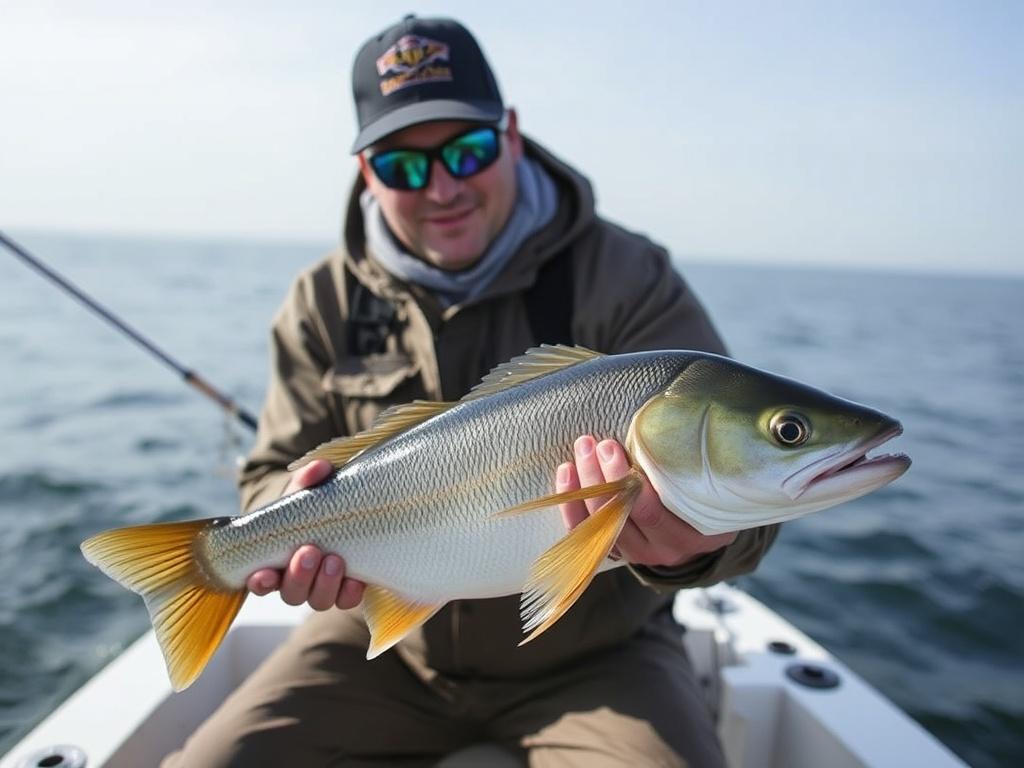
Boaters have mobility and electronics to combine. You can drift across contours, anchor on promising structure, or troll along weedlines and points. Each method has its place depending on the species and conditions.
Drift fishing is great for rivers and windy lakes: let wind or current move you across structure seams while you present lures in a natural path. Anchoring works when you find a hotspot—drop an anchor and probe the area with varied rigs. Trolling covers water quickly and is especially effective for species like walleye or lake trout that roam offshore.
Practical boat tips:
- When anchoring on structure, approach slowly and position to allow presentations across the feature, not just into it.
- When drifting, maintain control of drift speed to keep lures in the strike zone longer.
- Use a downrigging system or weights to keep lures at the desired depth while trolling.
Night and low-light fishing: capitalizing on nocturnal feeding
Many predator fish feed actively at night, using darkness to ambush prey. Night fishing can be extremely effective if you adjust tactics: use topwater baits when there’s enough silhouette, rely on lures that make noise or vibration, and fish near light sources such as docks where insects and baitfish gather.
Night strategies:
- Fish shallow structure near docks and weed edges with frogs or rattlebaits.
- In open water, slow-trolled crankbaits or jerkbaits can trigger nocturnal strikes.
- Use glow-in-the-dark or phosphorescent lures for low visibility conditions.
- Be safe—navigate slowly, use proper lighting, and know the local hazards.
Night fishing rewards patience and attention to subtle signs: a faint ripple, a line tension change, or a sudden thump on your rod. Stay alert and adjust quickly when the water speaks.
Ice fishing: reading frozen waters
Ice anglers read water differently, but many principles apply. Instead of watching surface cues, you rely on soundings and short-distance observations. Use a fishfinder designed for ice to locate baitfish and structure. Once you find a promising spot, probe the layer above it with small jigs and vary jigging cadence.
Ice fishing tactics:
- Drill a small pattern of holes over suspected structure to map the bottom and find baitfish.
- Use slow, subtle jigging—cold fish respond better to smaller movements.
- Pay attention to depth: fish often hold at specific layers above the bottom depending on oxygen and temperature.
Ice safety must always be the first priority: wear flotation, test ice thickness regularly, and never fish alone on unfamiliar ice.
Case studies: practical examples that show how to read water
Let’s go through a few real-world examples to illustrate the water-reading process. Each shows how combining observation, structure knowledge, and technique leads to success.
Case study 1: Wind-driven point on a midsummer day
You arrive at a 200-acre lake on a bright, breezy July morning. The wind has been blowing from the east for several days. You walk the downwind shoreline and notice a long point where the wind is pushing small waves and foam into a narrow bay. The weedline runs along the point’s edge, and you see baitfish jumping in the near-surface water. A bass pattern emerges: bait pushed against the downwind side, predators hunting the seam.
Strategy: fish the windblown point with vibrating baits parallel to the weedline and pop a topwater along the seam during low light hours. Use heavier line for weed penetration and mark the spot on your GPS for later return. The combination of wind, weed edge, and visible bait creates a high-probability zone.
Case study 2: Post-rain clarity change in a small river
After a light rain, a small river clears up as flows normalize. You walk the bank and find darker, deeper pockets behind large submerged boulders where the current slows. Foam is drifting from upstream and collects in small eddies. Trout often hold in the slower pockets to conserve energy while intercepting drifting insects and small fish.
Strategy: cast upstream of the pocket with a fly or small nymph and let it drift naturally. Use offset hooks and light line to maintain a natural presentation. The pocket behind the boulder provides the ambush zone; fish it slowly and methodically.
Case study 3: Summer thermocline suspending trout in a deep reservoir
You’re on a reservoir with deep basins. The surface is warm, and the trout are not cooperating near the surface. A sonar scan reveals a clear thermocline at 28 feet and scattered arches just above that depth in mid-basin areas with structure. The trout are holding in cool water just below the thermocline where oxygen is still adequate.
Strategy: vertical jig or slow-troll spoons and swimbaits at the depth of the arches. Use electronics to maintain position and mark productive spots. The key is hitting the exact depth where the trout are suspended—too shallow or too deep and the fish won’t respond.
Common mistakes when reading water—and how to avoid them
Even experienced anglers make mistakes when reading water. Here are the most common errors and how to fix them.
- Relying only on maps or electronics: these tools are great but don’t replace on-the-water observation. Always validate what you see on the screen with a visual confirmation or a test cast.
- Ignoring weather and light changes: a calm morning can shift to wind or cloud cover and change where fish are feeding. Re-evaluate frequently.
- Focusing only on big features: small micro-structures—tiny shady cuts, small humps, or a single boulder—are often overlooked but can hold fish, especially under pressure.
- Not varying presentation: if a particular lure isn’t producing after a few casts, change color, size, or cadence. Fish won’t always respond to the same thing.
- Assuming all species behave the same: different fish have different habitat preferences. What holds bass won’t always hold trout or walleye—adjust your expectations accordingly.
Ethics, regulations, and conservation
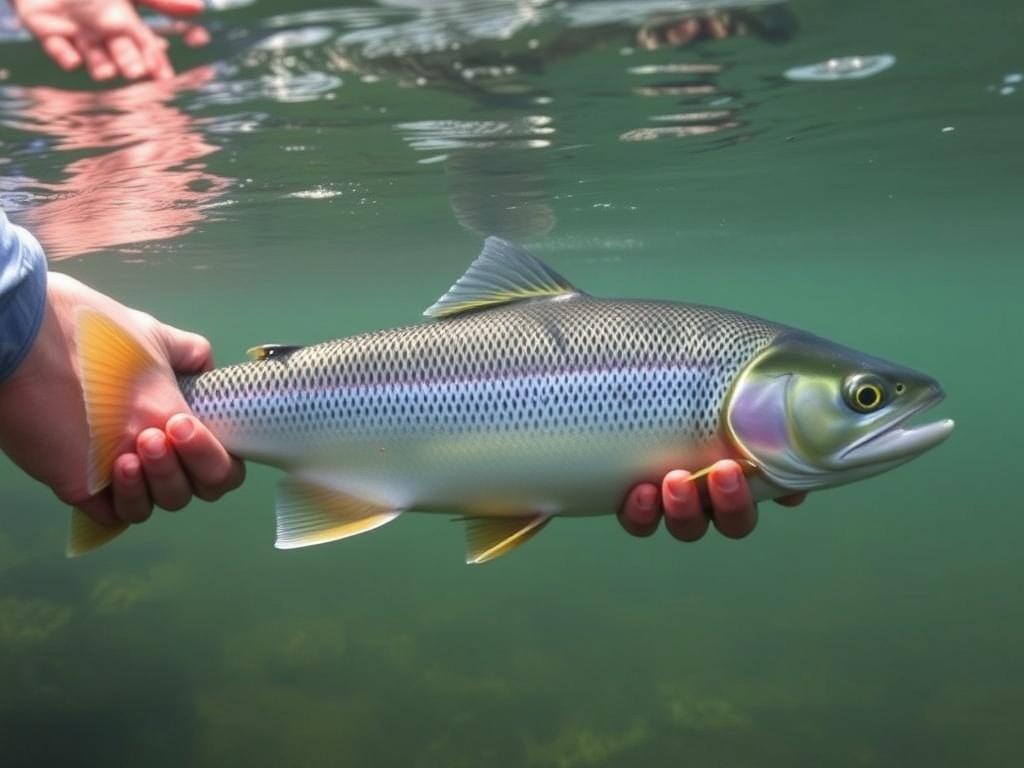
Reading water effectively comes with responsibility. Respect local regulations, seasons, and size limits. Learn and follow catch-and-release best practices if you’re not keeping fish. Release techniques—like using barbless hooks, wet hands, and minimizing air exposure—help populations stay healthy. Avoid overfishing sensitive spawning areas during the season. If you see trash or damage, help preserve the water by cleaning up and reporting problems to local authorities.
Responsible anglers ensure fish and fisheries remain viable for future generations. That stewardship is part of reading the water too: knowing when a population looks stressed and adjusting your approach to reduce impact.
Tools and gear for reading water
Certain tools make water-reading easier and more reliable. Here’s a list of useful items and how to use them.
| Tool | Use |
|---|---|
| Fishfinder / sonar | Locate structure, fish arches, and thermoclines; map bottom contours. |
| Topographic/lake maps | Pre-trip planning and identifying contours, humps, and channels. |
| Handheld thermometer | Measure surface and subsurface temperatures for depth decisions. |
| Polarized sunglasses | See surface structure, weedlines, and submerged features. |
| GPS unit | Mark waypoints for productive spots and track travel routes. |
| Depth finder / sounding lead | Verify depth in spot checks, especially in old or shallow maps. |
| Small nets and cameras | Inspect substrate samples or check juvenile fish and invertebrate presence. |
Checklist: how to approach a new fishing spot
Save this checklist and use it as a routine when you fish a new body of water. Over time, the steps will become second nature and speed up your ability to find fish.
- Scan the water from a high vantage point—note points, weedlines, and color changes.
- Check maps for contours and mark promising features.
- Observe surface signs: birds, boils, baitfish, and ripple patterns.
- Measure surface temperature and, if possible, test deeper with a thermometer.
- Identify current seams or eddies (in rivers) and slack-water pockets.
- Make initial casts to obvious seams with a versatile lure (e.g., crankbait or spinnerbait).
- If no bites, change depth, presentation, or lure type and move to similar nearby features.
- Mark productive spots on your GPS and return to them under similar conditions.
Advanced tips for experienced anglers
If you already know the basics, these advanced strategies refine your reading skills and give you an edge when fish are tough.
- Micro-patterns: Notice the small differences within a single structure. One side of a weed mat might be slightly deeper or warmer and hold fish differently.
- Time-shifting: fish often display the same behavior at the same time each day based on sun angle and tide—record those times and plan trips accordingly.
- Velocity mapping: in rivers, use floating markers to measure current speed across a channel to find seams where fish conserve energy.
- Seasonal linking: connect summer offshore spots with fall transition points—fish that move offshore to thermoclines often use the same underwater structure in fall as they move back toward shore.
- Using drones: where legal and permitted, drones provide aerial perspectives of weed formations, visible bait schools, and shoreline features you can’t see from the water.
Putting it together: a step-by-step day-plan
Here’s a template for how to plan and execute a productive day where you read the water and adapt to what you find.
- Pre-trip: study maps and recent weather; mark 6–10 likely spots with varied structure.
- On arrival: take a 10-minute reconnaissance walk or boat circuit—observe wind, birds, weedlines, and color changes.
- Make the first pass: fish the most promising spot with a general-purpose lure to test depth and activity.
- Adjust: if no action, change depth and lure type; if you get a bite, note the exact spot, depth, and lure used.
- Confirm pattern: move to similar features and see if the bite repeats—if yes, exploit the pattern and mark it for later.
- Rotate tactics: after a few hours, re-evaluate weather and light; move to different features expected to produce in the current conditions (e.g., early-morning shallow, mid-day deep).
- Record and reflect: jot down what worked for the day—the lure, depth, structure, and time. These notes build your knowledge bank for future trips.
Common species and their holding preferences (quick reference)
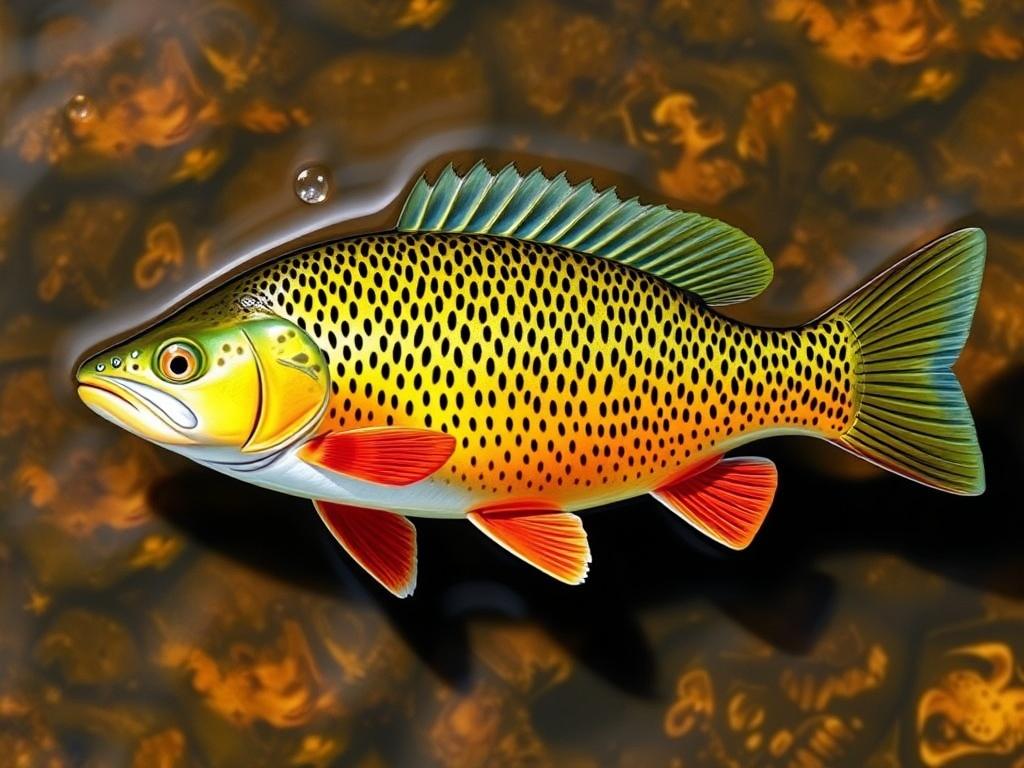
Different species have different preferences. Use this reference table to match species with typical habitats, but remember local variations matter.
| Species | Favorite Habitat | Best Presentation |
|---|---|---|
| Largemouth Bass | Shallow vegetation, weed edges, docks, and shallow cover | Topwater frogs, soft plastics, jigs, weedless rigs |
| Smallmouth Bass | Rocky points, ledges, current breaks, and deeper structure | Crankbaits, small jigs, tube baits, drop-shot |
| Trout (rainbow, brown) | Cold, oxygen-rich water; rivers: pools and riffle tails; lakes: deep and spring-fed areas | Flies, small minnows, spinners, small spoons |
| Walleye | Low-light zones, deep structure near daylight shade, and channel edges | Jigs, live-bait rigs, crankbaits fished slow |
| Pike / Muskellunge | Weed edges, submerged timber, and shallow ambush points | Large spoons, plugs, big soft plastics, topwater plugs |
| Catfish | Deep holes, current-slowing eddies, and structure near food sources | Bottom rigs with cut bait, stinkbaits, or live bait |
Practice exercises to sharpen your water-reading skills
The best way to improve is to practice deliberately. Here are exercises you can do in one session to build your water-reading muscles.
- Walk or paddle a shoreline and write down every visual clue you notice: color changes, weedlines, bird activity, wave patterns. Then check one or two of those spots with a test cast to see which clues were most accurate.
- Spend a day with a basic fishfinder and no lures—just mark structures and depth changes on the screen and then physically check those spots later with a fishing presentation to correlate your sonar readings to actual catchability.
- For river anglers, float a visual marker and observe where it pauses or spins—map current seams and test them for fish later.
- Track one species across seasons for a year—note where it holds each month and build a seasonal habit map customized to your water body.
Frequently asked questions (short answers)
How long should I scan a new spot before casting?
A quick 5–10 minute scan from multiple vantage points is ideal. Look for obvious signs first—birds, color changes, weed edges—then start casting to test your hypotheses. It’s better to test than to over-analyze for hours.
How do I know whether fish are suspended or on the bottom?
Sonar is the clearest indicator; look for arches in the water column. Otherwise, watch line behavior with light jigs—suspending fish will hit a lure mid-column, while bottom-holders usually strike near the last touch of the jig to the bottom.
Is it better to fish on foggy or sunny days?
Both have opportunities. Foggy or overcast days diffuse light and often produce better shallow feeding throughout the day. Sunny days push fish to deeper or shaded water midday but can produce explosive topwater activity in early morning and late afternoon.
How do tides affect fishing in estuaries?
Tides control water movement and bait migration. Incoming tides push bait into bays and up creeks, concentrating fish on structure and shorelines. Outgoing tides funnel bait out and create feeding lanes. Learn local tide charts and fish the leading edges of moving water where ambush points form.
Final thoughts: becoming a water-reading angler
Reading a body of water is a discipline you develop with observation, patience, and a willingness to experiment. Combine what you can see with what electronics tell you, use seasonal and species knowledge, and always adapt your presentation to the conditions. The more you practice, the faster you’ll build mental maps of where fish are likely to be under specific circumstances.
Each fishing trip is an opportunity to learn. Keep notes, mark waypoints, and reflect on what worked and what didn’t. Over time you’ll notice patterns and build a reliable sense of where fish are likely to be even before you arrive at the water. That’s when fishing transforms from luck into a repeatable skill—and every day on the water becomes richer, whether you catch a limit or simply enjoy being part of the ecosystem.
Resources and further reading
To go deeper, look for local lake maps, join regional angling clubs, and read species-specific guides. Hands-on instruction—like casting clinics, guided trips, or community workshops—can condense years of learning into a few days. Above all, spend time on the water; that’s the best teacher.
Parting checklist: the essentials to carry
Here’s a final short checklist to pack before any fishing trip focused on reading the water:
- Polarized sunglasses and hat
- Basic fishfinder or smartphone mapping app
- Thermometer
- Assortment of lures for shallow, mid-depth, and deep presentations
- Leader material and line suited for your water clarity
- Notebook or phone app to record what you find
- Safety gear—life jackets, first aid kit, and appropriate footwear
Thanks for reading—go out, observe, and enjoy the satisfaction that comes from finding the fish on your own. Once you start to read water consistently, every trip becomes a chance to refine a lifelong skill.

